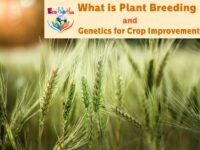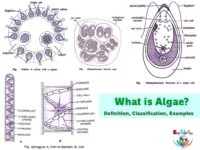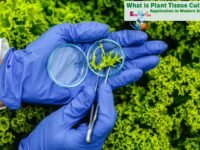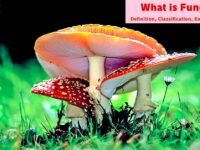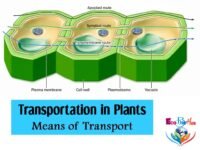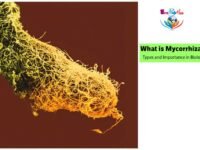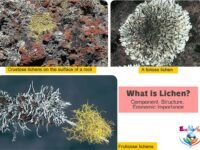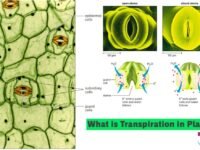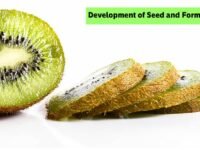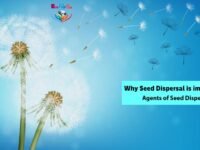In this tutorial, we have discussed ‘what is pollination‘, ‘types of pollination‘, ‘agents of pollination‘, ‘difference between self pollination and cross pollination‘ and many more.
TABLE OF CONTENTS
What is Pollination
– Pollination is the transfer of pollen grains from the anther to the stigma of the same flower or of another flower borne by the same plant (i.e., genetically similar flower) or of another flower borne on a different plant (i.e., genetically different plant of the same species).
– It occurs only in gymnosperms and angiosperms. Flowering plants have evolved an array of adaptations to achieve pollination. They make use of external agents like wind, water, animals, etc.
– Pollination in angiosperms generally takes place at 2-celled stage (rarely 3-celled stage) of microspores or pollen, i.e., pollen having vegetative cell and generative cell.
– If the pollen grains are transferred to the micropyle of the ovule directly, the pollination is called direct pollination, e.g., gymnosperms. Since the ovules are enclosed in the ovary in angiosperms, the pollination is called indirect pollination.
► Read More: What is Parthenocarpy And Parthenocarpic Fruits
► Read More: What is Apomixis and What is its Importance in Plants?
► Read More: What is Polyembryony and its Significance in Plants
► Read More: Inflorescence Types || Racemose, Cymose, Mixed, Specialized
Types of Pollination
Pollination was classified primarily into two types – self pollination and cross pollination.
Recently, depending on the source of pollen, pollination has been divided into three types – autogamy, geitonogamy, and xenogamy or allogamy or cross pollination.
A. Self Pollination
– The transfer of pollen grains from anthers to the stigma of the same flower or of another flower borne by the same plant (i.e., genetically similar flower) is called self pollination.
– It takes place in bisexual flowers or between unisexual flowers borne by the same plant. Self pollination is of two types: autogamy and geitonogamy.
(i) Autogamy
Autogamy is the transfer of pollen grains from the anther to the stigma of the same flower. It always occurs in bisexual flowers. For autogamy, it is essential that both anthers and stigma mature at the same time. Autogamy is achieved by the following methods:
(a) Homogamy
In homogamy, stamens and stigma of a flower mature at the same time and are brought closer by growth, bending, or folding. Homogamy occurs in Potato, Wheat, Rice, Mirabilis, Catharanthus, etc.
In Rice, Wheat, and Pea, anthers and stigma of a bisexual flower mature before opening of bud into flower to ensure self pollination. This is called bud pollination.
(b) Cleistogamy
In Commelina, Bengalensis, Viola, Oxalis, Arachis, the anthers mature and burst liberating their pollen grains in a closed flower. Such plants usually have two types of flowers.
(i) Underground closed flowers called cleistogamous.
(ii) Aerial flowers which open like normal flowers are called chasmogamous. These flowers later become cleistogamous in order to ensure fruit formation.
Cleistogamous flowers are very small, colourless, odourless and without nectar because they need not attract insects for pollination. Aerial flowers are larger, brightly coloured and scented. Plants bearing both chasmogamous and cleistogamous flowers are called chasmocleistogamous.
(ii) Geitonogamy
Geitonogamy is the transfer of pollen grains from the anther of one flower to the stigma of another flower present in the same inflorescence or in the same plant.
Geitonogamy occurs between bisexual flowers or unisexual flowers of the same plant.
Geitonogamy is genetically equivalent to self pollination but ecologically it is cross pollination.
Since male and female reproductive parts belong to the same parent plant, both autogamy and geitonogamy represent self pollination.
It has the following advantages: ➢ Less chances of failure of pollination. ➢ Purity of the race is maintained. ➢ Flowers need not be large and showy. Scent and nectar need not be produced. ➢ The plant does not need to produce a large number of pollen grains. ➢ Self pollination eliminates some bad recessive characters. It has the following disadvantages: ➢ Continuation of self pollination results in weaker progeny. ➢ Resistance (or immunity) to diseases decreases. ➢ Variability and hence adaptability to changing environment is reduced. – The transfer of pollen grains from anther of one flower to the stigma of another flower borne on a different plant (i.e., a genetically different plant of the same species) is called cross pollination. – It is also called xenogamy. The term allogamy includes both geitonogamy and xenogamy. – Cross pollination is performed with the help of an external agency. It may be abiotic (wind, water) or biotic (insects, birds, bats, snails). Cross pollination is named after the agency that assists it, viz. anemophily (wind pollination), hydrophily (water pollination), entomophily (insect pollination), ornithophily (bird pollination), chiropterophily (bat pollination) and malacophily (snail pollination). ➢ Cross pollination introduces genetic recombinations and hence variations in the progeny. ➢ Offspring produced have healthier seeds and better yield. This is called hybrid vigour. ➢ Cross pollination has resulted in producing disease resistant and high yielding varieties of many economically important plants. ➢ Cross pollination increases the adaptability of the offspring towards changes in the environment. ➢ Cross pollination is utilised for developing new kinds of vegetables and fruits. ➢ Cross pollination results in the formation of individuals with new useful characters. The defective characters of the race are eliminated and replaced by better characters. ➢ Cross pollination is uncertain because a factor of chance is always involved. ➢ It may lead to the addition of some undesirable character or loss of some important character. ➢ It is not economical for plants because they use a lot of energy and food material for devices to bring about pollination. ➢ It is highly wasteful because plants have to produce a large number of pollen grains and other accessory structures in order to suit the various pollinating agencies. TABLE: Difference between Self Pollination and Cross Pollination To prevent self pollination and ensure cross pollination, following adaptations are found in flowers: (i). Unisexuality (Dicliny): Flowers are unisexual so that self pollination is not possible. Plants may be monoecious or dioecious. (a) Monoecious plants bear both male and female flowers on the same plant, as in Pumpkin, Maize, Cucumber and Castor. (b) In dioecious plants, male and female flowers are borne on separate plants, i.e., staminate flowers are present on male plants and pistillate flowers on female plants as in Papaya, Cannabis, Mulberry and Date palm. (ii). Dichogamy: To avoid self pollination, anthers and stigma in a bisexual flower mature at different times. This is called dichogamy. It may be: (a) Protandry (Gk. protos = first; andros = male): The anthers mature earlier so that its stigma is not ready to receive pollen from its anthers, as in Salvia, Clerodendron, Sunflower, Cotton, Lady’s finger, Jasmine, etc. (b) Protogyny (Gk. protos = first; gyne = female): Stigmas mature earlier so that they get pollinated before the anthers of the same flower mature and develop pollen grains, e.g., Gloriosa, Plantago, Mirabilis jalapa (Four O’clock), Peepal and Banyan. (iii). Heterostyly: In heterostyly, flowers have different heights of stamens and styles but pollination is affected between anthers and stigmas of the same height. Two different types of heterostyly are seen in such bisexual flowers: (a) Diheterostyly (Dimorphic Heterostyly): The flowers are of two types ● Pin-eyed flowers with a long style and short stamens and ● Thrum-eyed flowers with a short style and long stamens. These are found in Jasmine and Primrose (Primula). (b) Triheterostyly (Trimorphic heterostyly): The plant bears three types of bisexual flowers with different heights of styles and stamens, long, short and medium as in Lathyrus and Oxalis. (iv). Herkogamy: In some bisexual flowers, where stigma and anthers mature at the same time self pollination is averted by some physical barrier, such as: (a) Extrose dehiscence of anthers so that pollen does not fall on the stigma. (b) A flap covers the stigma in Pansy. (c) Corolla forms pockets to house stamens in Kalima. (d) Pollinia enclose pollen grains in Calotropis and Orchids and can be transferred by insects only. (e) In Salvia, a lever mechanism operates to shed pollen grains at the back of insect visiting flower for nectar. (f) In Aristolochia, the flowers are protogynous and brightly coloured to attract flies. But once trapped inside, these cannot come out until anthers mature and deflexed hair present in the corolla tube is withered. Therefore, when flies escape they are covered with pollen grains. (g) In Gloriosa, anthers dehisce at a distance so that the stigma is out of reach of its own pollen. (v). Prepotency: Pollen grains coming from some other flowers grow faster than the pollen grains of their flowers, e.g., Apple and Grape. (vi). Self Sterility (or Self Incompatibility): In some bisexual flowers, pollen grains of one flower fail to grow on the stigma of the same flower. This is the highest degree of specialisation to avoid self pollination. It is seen in Potato, Tobacco, Crucifers. The agents or vectors responsible for cross pollination in angiosperms have been grouped into two categories: abiotic such as wind, water, etc. and biotic, such as animals. The pollination of flowers by wind is called anemophily (Gk. anemos = wind + philein = to love). Characteristics of Anemophilous flowers: 1. Flowers are colourless, inconspicuous and small, without fragrance and nectar. 2. Pollen grains are produced in large quantities. For example, a single flower of Cannabis produces 5,00,000 pollen grains and 25 million by a tassel of Maize. 3. The pollen grains are light, dry, nonsticky and sometimes winged so that they are easily blown by wind over long distances, up to 1300 km. 4. Stamens have long filaments, so that anthers are exposed and can sway outside the flower in air currents. 5. When flowers are unisexual, the pistillate flowers are packed into inflorescence as in corn cob. Each flower has a single ovule. 6. In female flowers of Maize, the stigmas and styles are hairy and branched and form tessels. They sway in the wind to trap, pollen grains. In bisexual flowers feathery stigma hangs out of the flower to catch pollen in the air. 7. In certain cases, flowers are produced before the appearance of leaves to increase the chances of pollen grains reaching the stigma. 8. Calyx and corolla are either reduced or absent. Anthers are usually exserted and versatile. 9. In plants like Urtica, anthers burst suddenly to throw pollen grains into the air called gunpowder mechanism. The common examples of wind pollinated flowers are Grasses, Sugarcane, Maize, Bamboo, Coconut Palm, Date Palm, Cannabis, Amaranthus, etc. Hydrophily is the transfer of pollen grains from the anther of a flower to the stigma of another flower through water. Characteristics of hydrophilous flowers: 1. Hydrophilous flowers are small and inconspicuous. 2. Without nectar and odour. 3. Unwettable perianth, other floral parts and pollen grains. 4. Long and sticky stigma. Pollination by water does not occur in all aquatic plants. In aquatic plants with emergent flowers, pollination takes place by air or by insects as in Water Lily and Lotus. In Vallisneria, Hydrilla and Zostera, etc. hydrophilous pollination occurs. However, hydrophily is of two types: epihydrophily and hypohydrophily. This type of pollination occurs in those aquatic plants where flowers remain on the surface of water as in Vallisneria. In Vallisneria, the plants are dioecious, i.e., the male flowers are small, short-stalked and produced in large numbers. These flowers are surrounded by a spathe under water. The female flowers, on the other hand, are solitary and are borne on long and coiled stalks. On maturing, male flowers get detached from the parent plant and float on the surface of water owing to the opening of the perianth into a boat-like structure. At the same time, female flowers rise to the surface of water by the straightening of stalk. As the male and female flowers come closer while floating, the male flowers are drawn in the depression of female flower and anthers come in contact with the large trifid stigma of the female flower. They burst liberating pollen grains which stick to the stigma. After pollination, the female flowers close and their long stalks curl up, drawing the flowers below the surface of water down in the mud where the seeds and fruits ripen. This type of pollination occurs in totally submerged plants like Zostera and Ceratophyllum. In Zostera marina, a marine submerged angiosperm, the pollen grains are long, ribbon-like (about 2500 μ) and without exine. These float below the water surface. The stigmas of the flowers are also quite long. The elongated pollen grains on reaching the stigma, coil around it and germinate and bring about pollination. Ceratophyllum demersum is a submerged freshwater plant. It bears both male and female flowers on the same plant. A male flower bears 30-45 stamens. The mature anthers get detached at the base, float to the surface of water and undergo dehiscence to liberate the pollen. The pollen grains germinate and sink in water. While sinking in water, they come in contact with a long and sticky stigma and affect the pollination of the female flowers. When pollination is brought about by the agency of insects, it is known as entomophily or insect pollination. Moths, Beetles, Bees, Wasps, Butterflies, Ants, Flies, etc., are the insects that pollinate flowers. Of these, Bees are the most common pollinating agents. Insects visit flowers for nectar, edible pollen grains or shelter. Bees have pollen baskets for collecting pollens. Characteristics of Entomophilous Flowers: 1. Flowers are usually larger, conspicuous and brightly coloured to attract insects as in Rose, Sunflower, Hollyhock, etc. 2. Pollen grains are covered with a yellowish, sticky substance called pollen kitt. This makes pollen grains stick to the body of insects. 3. The sepals and petals are well-developed, showy and attractive. Sometimes, petals develop peculiar shapes to attract insects. 4. Most of the nocturnal flowers are insect-loving. They give out a sweet smell at night to attract insects from a distance. Common examples are Jasmine, Rose and Rangoon creeper. 5. Nectar is secreted for feeding the visiting insects. Nectar glands are placed in such a position that insects touch both anthers and stigmas. 6. Pollen grains are rough and sticky and often with spinous outgrowths. 7. The stigma is also sticky to catch pollen grains easily. 8. In many cases, pollen grains are edible and offer additional attraction to insects as in Rosa, Clematis and Magnolia. 9. In many cases, special markings occur on petals for guiding the insect to nectar glands. These are called honey or nectar guides as in Viola. 10. When flowers are small and inconspicuous, other parts become enlarged, coloured and showy. In Bougainvillea, bracts are brightly coloured. In Euphorbia splenedus, bracts of each cyathium become deep red in colour. In Poinsettia, leaves in the floral region become wholly or partly coloured. 11. When flowers are small and inconspicuous, they are condensed together to form a head as in Sunflower. In such cases, a single insect pollinates a large number of flowers. 12. The insect-pollinated flowers usually blossom at a time when the particular insect is also active. 13. Most insect-pollinated flowers have a platform for the landing of insects. 14. Some flowers have structural peculiarities to get pollinated by a particular type of insect, e.g., opening of bilabiate flowers of Snapdragon by the weight of the pollinating insect, depth of corolla tube for insects with different types of tongues, etc. TABLE: Difference between Anemophilous and Entomophilous Flowers ■ Salvia: In Salvia, pollination is brought about by insects. The calyx and corolla are bilabiate. Corolla is tubular at below but its upper part is divided into two lips. The lower lip serves as a platform for the visiting insect. The upper lip forms a hood-like structure which protects essential organs of the flower. There are two epipetalous stamens in anterolateral position. Each stamen has a short filament and a long curved connective with two unequal arms. The longer arm of the connective bears a fertile anther lobe while the shorter arm bears the sterile anther lobe. The two sterile halves are situated in the throat of the corolla forming an obstacle in the path of visiting insects. Stigma is bilobed and has a long style lying close under the hood of the corolla. When a bee sits on the lower lip and pushes its proboscis down into the corolla tube to collect honey, the lower ends of the connective are raised due to the lever mechanism. This causes longer arms to bend down upon the back of the insect and dust it with pollen grains. Salvia flowers are protandrous. When the pollen-dusted bee visits older flowers, style bends down and touches the back of the bee and receives pollens and gets pollinated. ■ Calotropis: In Calotropis, all anthers fuse with the stigma to form the gynostegium. The pollen grains in each half of the anther adhere together into a sac-like pollinium. The two pollinia of each anther are connected by a translator. The pollinia are lifted with translator by insects and are transferred to the stigma of other flowers. ■ Yucca: Yucca and moth, Pronuba, have an obligate symbiotic relationship. Moth cannot complete its life cycle without Yucca flowers and Yucca has no other pollinating agent. Female moth visits Yucca flowers at night and collects pollen in the form of balls. When it climbs to the top of the style, it pushes the pollen ball into the stylar canal and brings about pollination. At the same time, moth deposits eggs inside the ovary of Yucca flower, where larvae are born that feed on Yucca seeds. ■ Ficus: Ficus has hypanthodium inflorescence with a narrow opening for the entry of insects. In hypanthodium, there are three types of flowers: male, female and gall female. Male flowers are situated near the orifice while lower ones are long-styled female flowers and short-styled gall flowers. Figs are pollinated by the gall wasp, Blastophaga. Pollination performed by birds is called ornithophily. Sunbirds, Hummingbirds and Honeyeaters visit flowers and bring about pollination. Such birds are small but with a long beak. A few birds of large size, e.g., Myna, Parrot, Bulbul, Crow also pollinate flowers while visiting them. Characteristics of Ornithophilous Flowers: 1. Flowers are large-sized but without odour. 2. They are brightly coloured with yellowish-orange, reddish or bluish colour. 3. Corolla is usually funnel-shaped. 4. Floral parts are strong and leathery. 5. Flowers secrete a lot of nectar with plenty of sugar and water. A Humming bird may suck nectar equivalent to half of its body weight. Examples: Bignonia, Tecomaria (Honey sucker), Butea monosperma, Bottle brush, Agave, Bombax (Red silk cotton) are pollinated by birds. Pollination brought about by Bats is called chiropterophily. In plants like Kadamb, Bauhinia megalandra, Sausage tree, Adansonia, etc., pollination takes place with the help of Bats. Bats are nocturnal in habit. They visit flowers for nectar during night. In the process, they carry pollen grains from one flower to another. Bats may carry pollen grains as far as 30 km. Characteristics of Chiropterophilous Flowers: 1. Flowers are stout and of large size. 2. They have dull colour with strong fruity odour. 3. Pollen grains are abundant. Stamens are also numerous. Adamsonia bears 1500-2000 stamens per flower. 6. Malacophily Pollination by the Snails is called malacophily 7. Anthrophily It is controlled or artificial pollination performed by human beings during breeding experiments. Pollen grains are collected from selected plants and dusted over the stigma of other plants. Artificial pollination has been in practice in Date Palm since prehistorical time. ➢ Pollination is a prerequisite for fertilisation in flowering plants. ➢ It helps in production of seeds and fruits which ensure the continuity of species. ➢ Seeds and fruits are a source of nutrition for many animals. ➢ Pollination helps in new combinations of genes. ➢ It is easy to manipulate production of pure lines as well as desired varieties. ➢ It helps in developing hybrid seeds. ● Some of the methods currently used for pollen storage are as follows : – Dry and Cold Storage: Sub-freezing temperatures (–5°C to – 10°C) and low relative humidty (25 to 50%) have generally proved optimum for storing pollen in viable conditions. – Cryogenic Storage: Application of cryogenic technique (storage in liquid nitrogen, at –196°C) to preserve pollen viability for a prolonged duration has been found suitable for several economically important crops. At –196°C pollen undergoes negligible metabolic changes in terms of physiological and biochemical processes which otherwise might render them inviable. This method has also been recommended for convenient and economical storage and transport of germplasm. – Organic solvents: Acetone, benzene, ethanol, ether, chloroform and phenol, are generally regarded as toxic to organisms. However, it has been demonstrated beyond doubt that pollen grains kept in these organic solvents can germinate in vitro and even effect fertilization. (Iwanami et al, 1988). ● Some of the practical applications of pollen storage are: – To hybridise plants that flower at different times and locations or show non-synchronous flowering. – To provide a constant supply of short-lived (recalcitrant) pollen. – To facilitate supplementary pollination for improving yield. – To eliminate the need to grow male lines continuously in breeding programmes. – To ensure the availability of pollen throughout the year without using nurseries or artificial climate growth rooms. – To study pollen allergens and the mechanism of self-incompatibility. – Long-term germplasm storage, especially of unique genotypes. Majority of the flowering plants are hermaphrodite, i.e., male and female sex organs are borne by the same flower. In such plants, pollen grains come in contact with the stigma of the same flower. If self pollination is allowed to continue, it may result in breeding depression. Therefore, flowering plants have developed many devices to discourage self pollination and to encourage cross pollination. These devices are called incompatibility or outbreeding devices. Incompatibility is of the following two types: In most plants, pollen grains of different species fail to germinate or fuse and do not produce fruits and seeds. This is known as interspecific incompatibility. This device prevents cross fertilisation amongst members of different species. To a certain extent, this type of incompatibility is helpful in maintaining the individuality of a species. In many plant species, viable pollen grains of the same flower or from the same plant fails to produce fruits and seeds. This is called intraspecific incompatibility or self-sterility. Intraspecific incompatibility is a device to promote cross-pollination and ensure a certain degree of heterozygosity. This is important for the evolution of a species. Certain species that show self-incompatibility have several mating types. Flowers of these mating types differ from each other in the length of styles and stamens. In such cases, pollen grains from the same plant or any other plant bearing the same type of flowers are incompatible. Fertilisation takes place when the flowers are pollinated by pollen grains from any other mating type. Genetic Basis of Incompatibility On a genetic basis also, incompatibility is of two types: 1. Gametophytic Self Incompatibility (GSI): The genotype of male gametophyte, i.e., pollen grain determines self incompatibility. It is found in plants belonging to Solanacae, Liliaceae and Poaceae. GSI is controlled by a single gene which has several alleles such as S1, S2, S3…. A pollen grain carries a specific S-allele which is compatible only with the pistils whose diploid cells carry S-allele other than the one present in the pollen. 2. Saprophytic Self Incompatibility (SSI): The genotype of the sporophytic tissue of the plant from which pollen is derived (and not by the genotype of the pollen) determines the self incompatibility. For example, if the S-gene of diploid cells of the parent producing pollen has S1, S2, alleles, then the pollens will carry either S, or S2 allele. This pollen would be incompatible on pistils whose diploid cells have any of the S-alleles present in the pollen (i.e., Sı or Sz). The pollen with the above mentioned S-alleles would be effective only on pistils containing diploid cells with alleles other than S1, S2. SSI is found in the plants belonging to Asteraceae and Brassicaceae. In addition to genetic factors, proteins present in the pollen wall and stigmatic surface also determine the compatibility of pollen grains. Pollen grains of a number of plants may land over a stigma. The pistil recognises the pollen, whether it is of the right type (compatible) or of the wrong type (incompatible). Pistil accepts the pollen of the right type and promotes the post-pollination events leading to fertilisation. Pistil, on the other hand, rejects the pollen of the wrong type and prevents their germinaton. The events from pollen deposition on stigma, pollen germination and entry of pollen tube into the ovule are referred as pollen-pistil interaction. The compatibility or incompatibility of pollen-pistil interaction is determined by special proteins. Only compatible pollen is able to absorb water and nutrients from the surface of the stigma. It germinates and produces a pollen tube. The pollen tube grows into the style. Its growth and path through the style are also determined by specific chemicals. – Artificial Hybridisation is the technique of crossing different species and genera to combine desirable characters to produce commercially superior varieties (hybrid). It has been used by plant breeders for the crop improvement programme. – In artificial hybridisation, it is important to make sure that only the desired pollen grains are used for pollination and the – This is achieved by emasculation and bagging techniques. 1. Emasculation: It is the practice of removing stamens or anthers of a bisexual flower without affecting the female reproductive part before the anther dehisces, so that chances of self-pollination are eliminated. 2. Bagging: Emasculated flowers are covered with a bag made of butter paper. This prevents contamination of stigma from unwanted pollen grains. This process is called bagging. When the stigma of the bagged flowers matures, pollen grains with desired characters from flowers are dusted on the stigma and flowers are bagged again and the fruits are allowed to develop. In unisexual flowers, there is no need for emasculation. Only female flower buds are bagged before the flowers open. When stigma matures, pollination is carried out and the flowers are bagged again.B. Cross Pollination (Xenogamy or Allogamy)
Sl. No.
Self Pollination
Cross Pollination
01.
Pollen grains are transferred from anther to stigma of the same flower (autogamy) or another flower borne on the same plant (geitonogamy).
Pollen grains are transferred from anther of one flower to stigma of another flower borne on a different plant of the same species (allogamy).
02.
Both anthers and stigma mature at the same time.
The anthers and stigma of a flower mature at different times.
03.
External agent is not required for self pollination.
An external agent is essential for cross pollination.
04.
It is economical for the plant.
Cross pollination is not economical as the plant has to produce a large number of pollen grains, nectar, scent and bright coloured corollas, etc.
05.
Self pollination results in progenies which are pure lines, i.e., homozygous.
Cross pollination results in hybrids, i.e., heterozygous. They show variations in characteristics.
06.
It cannot eliminate harmful characters.
It may eliminate useless or harmful characters.
07.
Good characters remain preserved.
Good characters cannot always be preserved.
08.
It does not produce any variations.
It may induce variations, so the plants may be better adapted to a new or changed environment.
Adaptations or Contrivances to Ensure Cross Pollination (Outbreeding Devices)
Agents of Pollination
1. Anemophily or Wind Pollination
2. Hydrophily or Water Pollination
(i) Epihydrophily
(ii) Hypohydrophily
3. Entomophily or Insect Pollination
Sl. No.
Anemophilous Flowers
Entomophilous Flowers
01.
Flowers are generally small and inconspicuous.
Flowers are large and conspicuous from a distance.
02.
Flowers are without smell and do not produce nectar.
To attract insects, such flowers produce specific odour and nectar.
03.
Not of bright colour.
To attract insects, flowers are of bright colours.
04.
Pollen grains are not edible.
Some flowers have edible pollen.
05.
Sepals and petals are either small or absent.
Sepals and petals are quite prominent.
06.
Anthers are exerted and versatile.
Anthers are inserted and not versatile.
07.
Stigma is exserted and branched or feathery to entangle pollen grains.
Stigma is inserted and unbranched and sticky.
08.
There is profuse production of pollen grains.
Pollen grains are produced in less quantity.
09.
Anemophily is nondirectional.
Entomophily is highly directional.
4. Ornithophily or Pollination by Birds
5. Chiropterophily or pollination by Bats
Significance of Pollination
INCOMPATIBILITY: AN OUTBREEDING DEVICE
1. Interspecific Incompatibility
2. Intraspecific Incompatibility or Self Incompatibility
Pollen-Pistil Interaction
Artificial Hybridization
stigma is protected from contamination from unwanted pollen grains.

